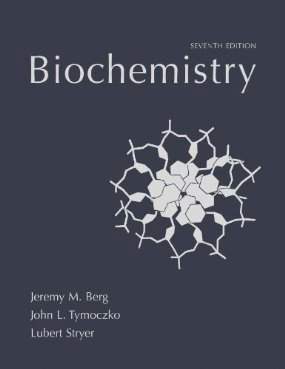Connecting...

This is a quick preview of the lesson. For full access, please Log In or Sign up.
For more information, please see full course syllabus of Biochemistry
For more information, please see full course syllabus of Biochemistry
Biochemistry The Pentose Phosphate Pathway
Lecture Description
Glucose 6-phosphate primarily is used in glycolysis, but it can also enter the pentose phosphate pathway (PPP). These five-carbon sugars can be used in RNA, DNA, ATP, NADH, FADH₂, and coenzyme A. In PPP, NADP⁺ acts as the oxidizing agent in the oxidative phase. Glucose 6-phosphate becomes 6-phosphogllucanate via a two-step process. It then loses a CO₂ molecule to become ribulose 5-phosphate, which isomerizes to ribose 5-phosphate. This can be recycled to glucose 6-phosphate via the non-oxidative phase if the cell does not need any ribose 5-phosphate. This lecture covers the mechanism of each step in depth and illustrates the overall change. Key reactions include the transketolase reaction and the transaldolase reaction.
Bookmark & Share
Embed
Share this knowledge with your friends!
Copy & Paste this embed code into your website’s HTML
Please ensure that your website editor is in text mode when you paste the code.(In Wordpress, the mode button is on the top right corner.)
×
Since this lesson is not free, only the preview will appear on your website.
- - Allow users to view the embedded video in full-size.
Next Lecture
Previous Lecture










































 Answer Engine
Answer Engine




1 answer
Thu Aug 23, 2018 8:15 AM
Post by Swati Sharma on August 21, 2018
Dear Dr Raffi, I am a little confused and so I have understood the following so far :
Oxidative Phase
So now G6P instead of getting converted to F6P rather gets converted to Ribulose 5 phosphate which gets isomerized to Ribose 5 Phosphate for the biosynthesis of nucleotides.
For Non oxidative Phase,
cells that do not require Ribose 5 Phosphate have to get converted back to G6P for the continuation of the oxidative phase for the regeneration of NADPH. So here I am getting confused does this mean that the Non Oxidative Phase is required for the continuation of Oxidative phase unless and until cells demand Ribose 5 Phosphate?. So in summary the process of entire conversion of G6P to Ribose 5 Phosphate is the OXIDATIVE PHASE, BUT the conversion of Ribulose 5 phosphate to F6P and then back to G6P is the NONOXIDATIVE PHASE and from there the production of NADPH keeps happening for the anabolic processes and that is the OXIDATIVE PHASE? So all the way from G6P to RIBOSE 5 POSPHATE IS THE OXIDATIVE PHASE, AND RECONVERSION OF RIBOSE 5 POSPHATE BACK TO G6P IS THE NON OXIDATIVE PHASE IF RIBOSE 5 POSPHATE NOT REQUIRED? Please let me know if I am correct.
Very Respectfully
Swati
1 answer
Fri Oct 24, 2014 10:02 PM
Post by Tim Zhang on October 22, 2014
Your lectures helped me a lot. However I faced a really difficult question on this topic, could you help me solve this?
The question ask that average human requires about 2,000 kcal of energy per day, which is equivalent to about 3 mol of glucose per day. It is a lot calories! but why don't humans spontaneously combust?
2 answers
Last reply by: tiffany yang
Wed Nov 13, 2013 10:07 PM
Post by tiffany yang on November 13, 2013
Dear professor,
I have an exam this friday, but I'm confused on the transaldolase reaction....isn't ketose being transferred as well? just like all the other nonoxidative reactions? so why is that one called transaldolase reaction, instead of transketolase rxn? Thanks! Your so amazing!
ALso, I read from my teacher's study material that there are four modes for PPP, depending on the needs , in mode one, where cell only needs ribose, then there WILL be nonoxidative reaction, so that fructose 6 phosphate and glyceral 3-phosphate will use the non oxidative PPP pathway to go back to ribose.(because we need ribose) THis I understand;
however, I don't understand why, when both ribose and NAPDG are needed, then there won't be non oxidative reaction happening. (the reason one the study guide was that because the product ribose is needed, therefore we don't want the non oxidative part to recycle those ribose, because we need those ribose.)
seems like these two are contradicting. Thanks.